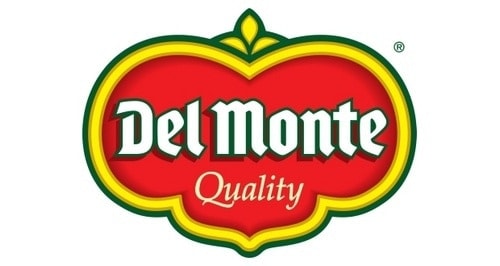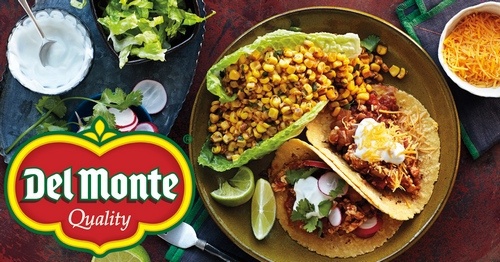The Marketing mix of Del Monte analyses the 4Ps of Del Monte, which includes the Product, Price, Place, and Promotion of Del Monte. Del Monte Foods is a private company of American origins and was founded in the year 1886. It is associated with food products in the United States retail industry. The company has a headquarters base in Walnut Creek, California, with several brands like S&W, Del Monte, and Contadina under its umbrella. Some of its rival companies in this field are as follows-
- Pinnacle
- ConAgra Foods
- Nestle
- Mars
About Del Monte
- Type: Food production and distribution company
- Industry: Processed food
- Founded: 1886
- Founder: John D. Spreckels
- Headquarters: Walnut Creek, California, United States
- Area served: Worldwide
- Key people: Mr. Rolando C. Gapud (Chairman) and Mahesh Kanchan (CEO)
- Number of employees: 9,000
Table of Contents
Del Monte Product Strategy
Del Monte is a recognized company that deals in the processed food industry. It is the largest distributor, producer, and marketer in the food sector. The company also sells, markets, distributes, and produces several private-label foods. The brand once had nearly fifty products, including olives, cranberry sauce, jellies, jams, berries, peppers, sweet potatoes, and squash. Products of this brand are known for their superior quality and unique taste. Its product portfolio includes-
- Del Monte Ketchup
- Del Monte juice
In 1892, Del Monte was used as a brand name for a new product line of canned peaches. After 1916, the company started marketing its products under this brand name. In 1972, it became the first food processor to include nutritional labeling on its items.
The product mix of Del Monte in 2023 is as follows(Source)
- Canned Fruits: Canned Pineapple: Del Monte is famous for its canned pineapple products, including pineapple slices, chunks, and crushed pineapple. Canned Peaches: Slice and dice peaches in syrup or fruit juice. Canned Pears: Slice and dice pears in syrup or fruit juice. Canned Fruit Cocktails: Mixed fruit combinations in syrup or fruit juice; canned Cherries: Cherries typically used for desserts and toppings. Canned Mandarin Oranges: Segmented mandarin orange products.
- Canned Vegetables: Green Beans: Cut and whole green beans in cans, Corn: Whole kernel corn and cream-style corn, Peas: Sweet peas and garden peas, Mixed Vegetables: A combination of vegetables like carrots, peas, and corn.
- Tomato Products: Tomato Sauce: Various types of tomato sauce used for cooking; Tomato Paste: Concentrated tomato paste for sauces and recipes; Diced Tomatoes: Canned diced tomatoes used in a variety of dishes; stewed Tomatoes: Canned stewed tomatoes with added seasonings.
- Fruit Cups and Snacks: Del Monte offers fruit cups and snacks, including fruit in plastic cups, fruit pouches, and fruit-infused snacks, catering to on-the-go and healthy snacking needs.
- Juices and Beverages: Del Monte produces a range of fruit juices, fruit drinks, and nectars in various flavors.
- Canned Meat and Seafood: While primarily known for fruits and vegetables, Del Monte also offers canned meats and seafood products such as canned tuna and chicken.
- Packaged Meals and Sides: Del Monte provides packaged meals and side dishes, including canned pasta, spaghetti sauce, and rice dishes.
Del Monte Place Strategy
Del Monte markets its packed products in South America and the United States. Over the years, the company has undergone various changes in its structure. It acquired several other companies and had to sell several sub-brands to survive. Del Monte is one of the most significant and well-known companies related to processed food in the consumer market. A superior distribution policy is critical to a good marketing and marketing mix for Del Monte. Monte has a widespread distributive channel for its products. In 1916, the company relied on commission agents to sell its products, and later, they employed wholesalers for this job. In 1917, significant changes occurred within the company, and it decided to put its onus on its seventy-one manufacturing plants for better production.
Some of them were in Idaho, Oregon, Washington, and California. By 1967, the company had decided to adopt a warehouse distribution system. Del Monte uses a source to supply chain channel, and its products are readily available at every nook and corner in discount stores, convenience stores, corner shops, and superstores.
Here are five key elements of Del Monte’s place strategy:
- Retail Presence: Del Monte products are strategically positioned in various retail outlets, including supermarkets, grocery stores, convenience stores, and hypermarkets. This extensive retail network ensures consumers can easily find Del Monte canned fruits, vegetables, and other products during regular shopping trips.
- Online Sales: Del Monte has expanded its online presence, allowing customers to purchase its products through its official website and various e-commerce platforms. This online channel provides convenience and accessibility to tech-savvy consumers who prefer to shop online.
- Global Distribution: Del Monte’s products are distributed globally, allowing the brand to serve consumers in numerous countries. The company leverages partnerships with international distributors and retailers to ensure its products are accessible in various regions.
- Foodservice and Institutional Sales: Del Monte supplies its products to restaurants, cafeterias, schools, healthcare facilities, and other food service providers. This business-to-business distribution channel helps Del Monte reach consumers in different dining and institutional settings.
- Promotional and Seasonal Displays: Del Monte often utilizes promotional and seasonal displays in retail stores to enhance visibility and stimulate sales during key periods, such as holidays and peak fruit and vegetable seasons.
Del Monte Pricing Strategy
Del Monte Foods generates approximately 1.8 billion dollars of sales annually and has a solid financial base. It faces stiff competition from its adversaries, and the company has adopted a competitive pricing policy that helps keep product prices at par with its rival companies. There are still a lot of untapped markets, and Del Monte realizes its vast potential. Therefore, the company has followed a penetration policy, providing an added advantage over its competitors. Most of the products of this recognized brand are affordable, as the company has adopted a reasonable and competitive pricing strategy and policy for almost all its products. The company believes in volume sales and has taken several steps to increase its sales figures.
Here’s an overview of Del Monte’s pricing strategy:
- Value-Based Pricing: Del Monte’s pricing strategy centers on the perceived value of its products. The brand emphasizes its canned fruits and vegetables’ quality, taste, and convenience, allowing it to command a premium price compared to generic or store brands.
- Competitive Pricing: While emphasizing value, Del Monte also monitors and aligns its pricing with industry and market competitors. This ensures its products remain competitive and attractive to consumers while maintaining profitability.
- Seasonal Pricing: Del Monte may adjust prices seasonally, particularly for products tied to specific harvest seasons. This can include offering promotional prices during peak fruit and vegetable seasons to attract budget-conscious shoppers.
- Product Tiering: Del Monte offers a range of product tiers, allowing consumers to choose from standard options to premium or organic varieties. This tiering enables the brand to cater to various customer preferences and budgets.
- Promotional and Bundled Pricing: Del Monte employs promotional pricing tactics, such as discounts, buy-one-get-one offers, and bundled packages, to stimulate sales and encourage consumers to purchase larger quantities.
Del Monte Promotion Strategy
Del Monte is a world-class food brand well-known for its unique products. Its famous taglines are Taste Like Never Before and Eat Healthy, Live Healthy. The company has targeted the upper-middle and middle-class of society as its consumer base.
It has a full-fledged marketing team to promote its products in the consumer market. In 1918, Del Monte decided to opt for mass advertising, and the first advertisement was published in Saturday Evening Post.
Since then, the company has been evaluating its strategies with the help of new products, new packaging, and new advertisements. Advertising and marketing strategies need a medium and target audience. Del Monte has utilized its advantage in electronic, print, and social media. Its commercials are aired on radio and television, published in newspapers and magazines, and displayed on billboards and hoardings.
Del Monte’s promotion and marketing strategy includes:
- Marketing Campaigns: Del Monte runs marketing campaigns emphasizing the freshness, taste, and convenience of its canned fruits and vegetables, targeting consumers and food service providers.
- In-Store Promotions: Del Monte frequently employs in-store displays, coupons, and promotional offers to boost visibility and drive sales during peak seasons and holidays.
- Digital Engagement: Del Monte actively engages with consumers through digital channels, including social media and its website, to share recipes, tips, and nutritional information, fostering brand engagement and loyalty.
Some Recent Video ads and Print ads of Del Monte are:
Liked this post? Check out the complete series on Marketing Mix

